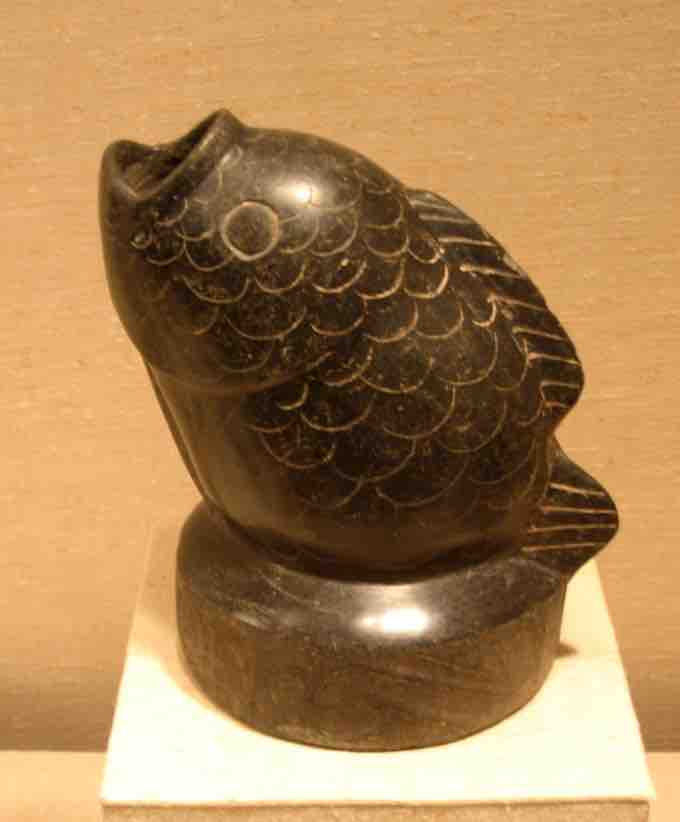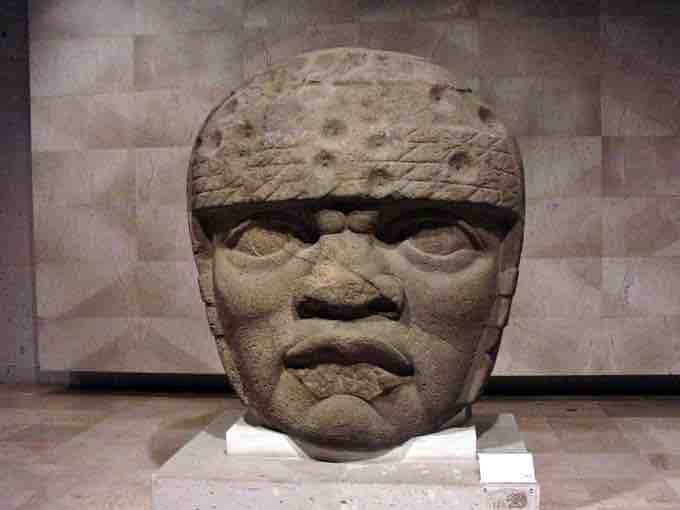The First Major Mesoamerican Art
The first major Mesoamerican art, that of the Olmec, emerged during the Preclassic period along the Gulf of Mexico. Across the swampy coastal areas of the modern Mexican states of Veracruz and Tabasco, the Olmec constructed ceremonial centers on raised earth mounds. To fill these centers, they made objects from many types of materials including jade, clay, basalt, and greenstone. Most of these small objects were figurines or sculptures that resembled both human and animal subjects.

Fish Vessel, 12th–9th century BCE
Olmec art frequently featured animal as well as human subjects.
While Olmec figurines are found abundantly in sites throughout the Formative period, monumental works of basalt sculpture, including colossal heads, altars, and seated figures are the most recognizable feature of Olmec culture. The huge basalt rocks for the large works of sculpture were quarried at distant sites and transported to Olmec centers such as San Lorenzo and La Venta. The colossal heads range in height from 5 to 12 feet. The heads portray adult males wearing close-fitting caps with chin straps and large, round earspools. The fleshy faces have almond-shaped eyes, flat, broad noses, thick protruding lips, and downturned mouths. Each face is different with its own personality, suggesting that they represent specific individuals.

Olmec Head No. 3 from San Lorenzo Tenochtitlan 1200-900 BCE.
It is believed that the Olmec colossal heads are depictions of powerful rulers.
These massive basalt boulders were transported from the Sierra de los Tuxtlas Mountains of Veracruz. When originally displayed in Olmec centers, the heads were arranged in lines or groups; however, the method used to transport the stone to these sites remains unclear. Given the enormous weight of the stones and thus the man power required to transport them over large distances, it is probable that the colossal portraits represent powerful Olmec rulers.
The discovery of a colossal head at Tres Zapotes in the nineteenth century spurred the first archaeological investigations of Olmec culture by Matthew Stirling in 1938. Seventeen confirmed examples are known from four sites within the Olmec heartland on the Gulf Coast of Mexico. Most colossal heads were sculpted from spherical boulders but two from San Lorenzo Tenochtitlán were re-carved from massive stone thrones. An additional monument at Takalik Abaj in Guatemala is a throne that may have been carved from a colossal head. This is the only known example from outside the Olmec heartland.
Dating the monuments remains difficult because of the movement of many from their original contexts prior to archaeological investigation. Most have been dated to the Early Preclassic (or Formative) period (1500–1000 BCE) with some to the Middle Preclassic (1000–400 BCE) period. The smallest weigh 6 tons, while the largest is variously estimated to weigh 40 to 50 tons, although it was abandoned and left unfinished close to the source of its stone.